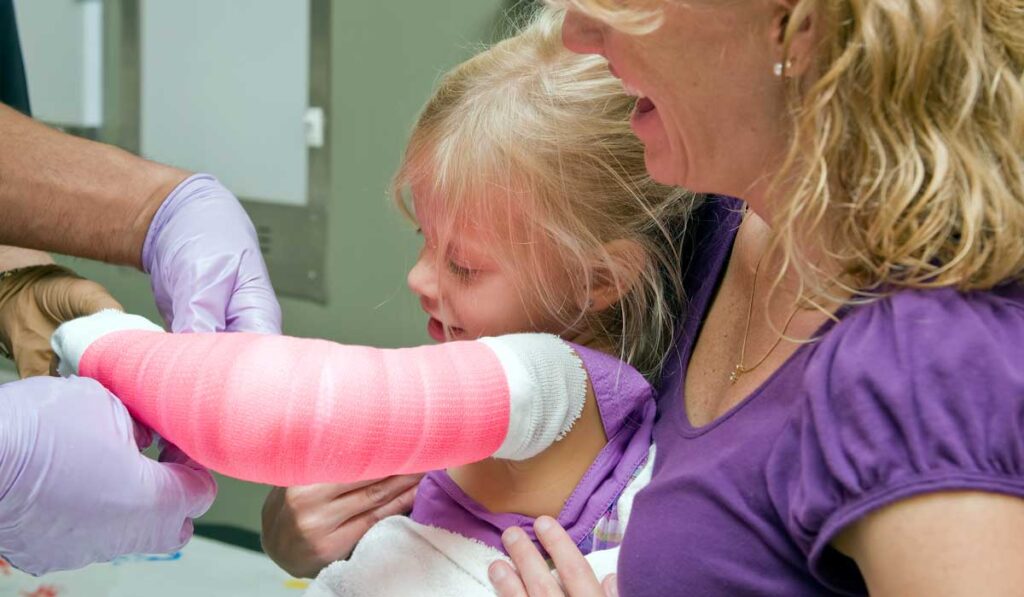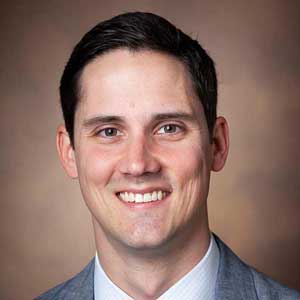Transporting children with a supracondylar humerus (SCH) elbow fracture to seek treatment at a tertiary pediatric center may stem from an unwarranted abundance of caution, according to the research of Craig Louer, M.D., an assistant professor of pediatric orthopaedics Vanderbilt University Medical Center.
Louer was principal investigator on a study published in September 2021 to help settle the debate on pediatric orthopaedic referrals. The results showed that adult orthopaedic surgeons perform non-complex fixation surgery with efficacy similar to that of pediatric surgeons.
“I think national patterns of referral and the current litigation environment are causing many adult orthopaedists to steer clear of doing these fixations,” Louer said. “We hypothesized that the difference in outcomes between treatment by pediatric and non-pediatric orthopaedic surgeons is negligible. But it’s a decision that has big implications for quality and value in health care.”
Louer’s study bore out his hypothesis, finding that the delay in treatment, additional expense and complexities of travel argue against this option, which many pediatric and adult orthopaedic specialists consider protocol. The study also offered an opportunity to compare the safety and durability of lateral pin versus medial crossed-pin methods of fixation, a debate Louer says has swung in both directions over the past 15 to 20 years.
Foundational Evidence
An SCH fracture is a common elbow fracture in children. When angulated or displaced, surgery is indicated, with either lateral or medial crossed-pin fixation. Blood vessel and nerve injuries are rare, and most children regain 72 percent range of motion within six weeks and 98 percent by one year after surgery.
“If you can improve value and efficiency and get similar outcomes without referring the patient, this is worth chipping away at – it is what our system overall needs right now.”
Past studies comparing treatment by pediatric and adult orthopaedists demonstrated a pediatric superiority that just brushed past the level of significance. However, a 2008 retrospective study of 444 of SCH fracture cases found no significant difference in overall complication rates in patients treated by adult (22.7 percent) versus pediatric (16.8 percent) orthopaedists.
Granular Differences
In the Journal of Pediatric Orthopaedics, Louer and his team compared early outcomes of 311 surgically treated SCH fractures between pediatric orthopaedists and their adult counterparts at a single center where both groups manage these fractures. Included were 301 extension-type and 10 flexion-type fractures, which Louer says roughly reflected the known ratio of 19:1 between the types, with treatment distributed among pediatric and adult orthopaedists.
They found major loss of reduction in 1.5 percent of patients treated by pediatric orthopaedists and 2.2 percent for those treated by adult doctors. Iatrogenic nerve injury rates were nonexistent for the pediatric orthopaedists and 3.4 percent for the adult specialists. All nerve palsies resolved by a mean of 13.1 weeks. Rates of reoperation, infection, readmission, open reduction and postsurgical outcomes were all similar, though operative times were nominally shorter for the pediatric orthopaedists.
Pin constructs performed by pediatric specialists were graded as being of higher quality, but the authors say the differences in outcome were negligible. The medial crossed-pin technique was associated with major loss of reduction, and this technique was higher among adult orthopaedists. However, Louer explains that the pediatric surgeons may more closely adhere to current surgical trends, such as lateral entry and increased pin spread principles, but they did not see important differences in clinical outcomes.
Fewer Transfers for Rural Patients
Vanderbilt is surrounded by vast areas of rural communities where pediatric orthopaedists are not always available. Patient transfers to tertiary centers can be inconvenient and expensive for families. For this reason, Louer says this study has direct implications for how centers throughout Middle Tennessee and beyond make referral decisions.
Unnecessary emergency department transfers carry an average cost of $4,843 each, with responsibility primarily falling to the medical center and insurers. Given the trade-offs in time, expense and inconvenience, Louer argues that if a surgeon at the site of triage is comfortable doing the procedure, there is no reason to defer and refer.
“The goal of our residency training is to train us to be general orthopedics, and we see a huge number of these fractures before we ever subspecialize,” he said. “If you can improve value and efficiency and get similar outcomes without referring the patient, this is worth chipping away at – it is what our system overall needs right now.”
Data Confirms Hunches, Settles Debates
Louer is working with a team led by Jonathan Schoenecker, M.D., using a large trauma database to study unsettled debates like this one, with the goal of providing additional guidance.
“Nate Lempert and I just started a study on whether we can accelerate the rehabilitation protocol for tibial tubercle fractures,” Louer added. “With this database, we are able to follow numerous hunches we have from our experience and other research.”
They are also building a spine deformity database. “Scoliosis is one of my interests, and we are gathering critical data on past patterns of post-surgical infection rates, correction quality, medications and different strategies used so we can refine our protocols,” Louer said.





